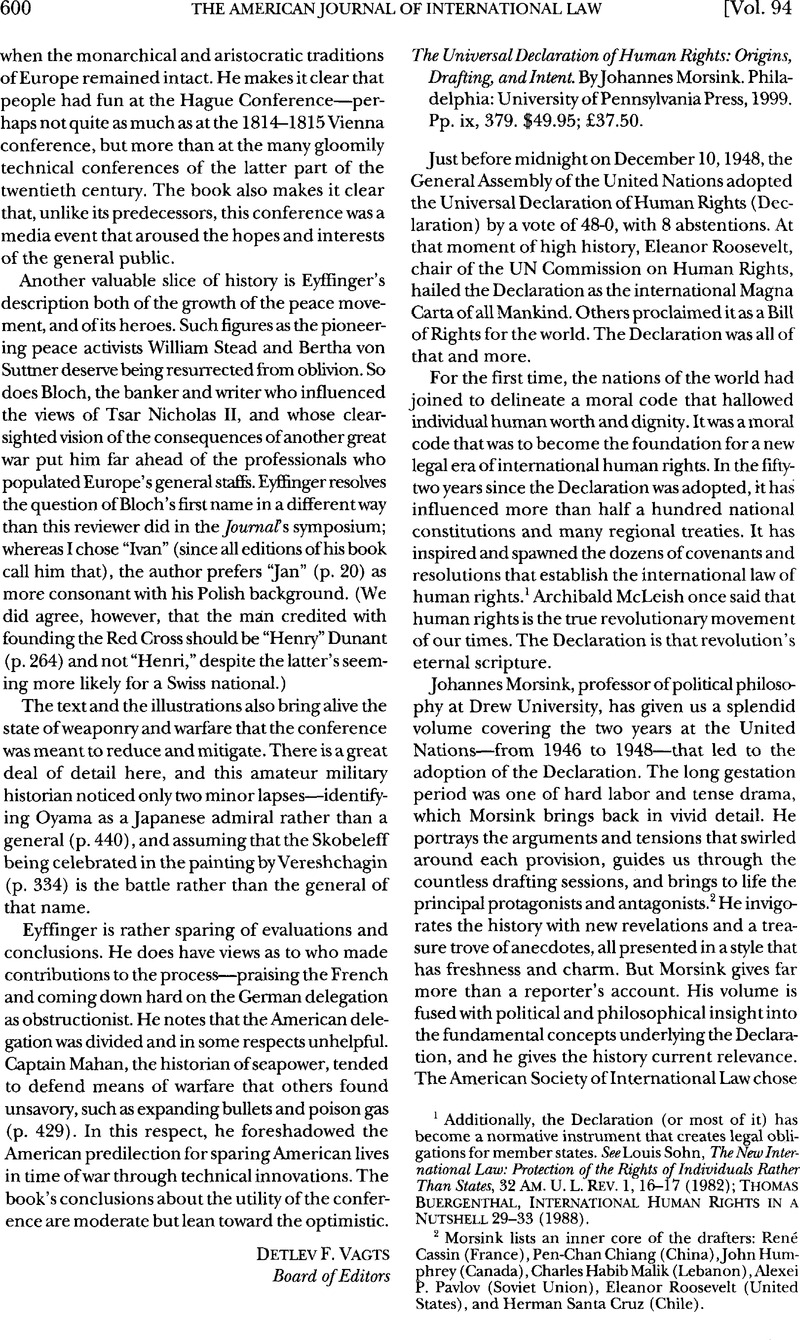Article contents
The Universal Declaration of Human Rights: Origins, Drafting, and Intent. By Johannes Morsink. Philadelphia: University of Pennsylvania Press, 1999. Pp. ix, 379. $49.95; £37.50.
Published online by Cambridge University Press: 27 February 2017
Abstract

- Type
- Book Reviews and Notes
- Information
- Copyright
- Copyright © American Society of International Law 2000
References
1 Additionally, the Declaration (or most of it) has become a normative instrument that creates legal obligations for member states. See Sohn, Louis, The New International Law: Protection of the Rights of Individuals Rather Than States, 32 Am. U. L. Rev. 1, 16–17 (1982)Google Scholar; Buergenthal, Thomas, International Human Rights In A Nutshell 29–33 (1988)Google Scholar.
2 Morsink lists an inner core of the drafters: René Cassin (France), Pen-Chan Chiang (China) John Humphrey (Canada), Charles Habib Malik (Lebanon), Alexei P. Pavlov (Soviet Union), Eleanor Roosevelt (United States), and Herman Santa Cruz (Chile).
3 Morsink mentions that his information on the different traditions that were represented (from a total of 58 states)—drawn from a secondary source—does not tally with the number of states that voted (or abstained) on the Declaration (56). This minor inconsistency in the numbers does not, however, affect his argument.
4 Humphrey, John P., Human Rights and the United Nations: A Great Adventure (1984)Google Scholar. Humphrey’s volume is largely his personal odyssey; only about 50 pages are devoted to the history of the Declaration.
- 1
- Cited by




